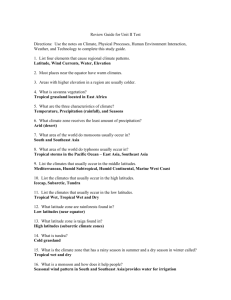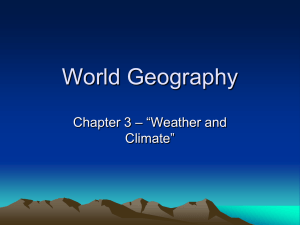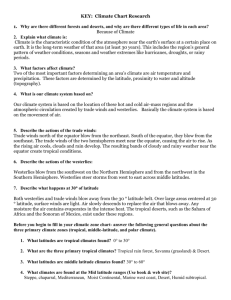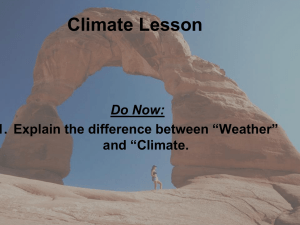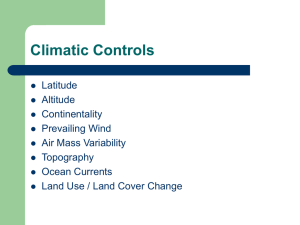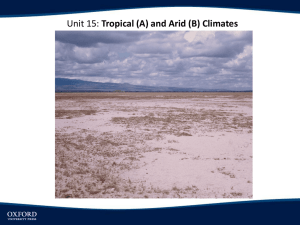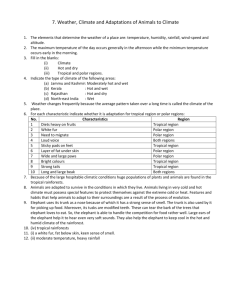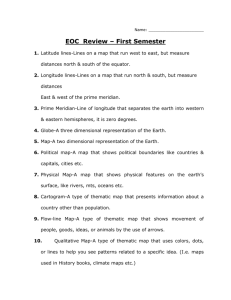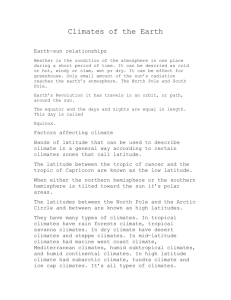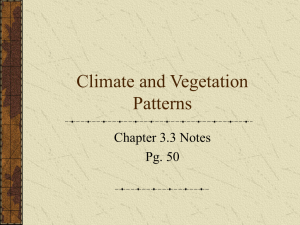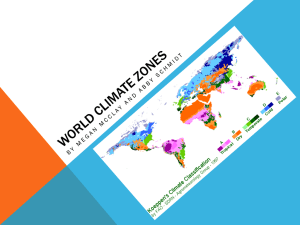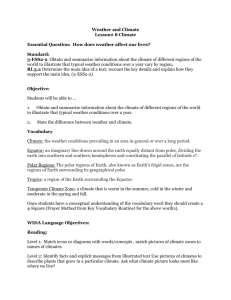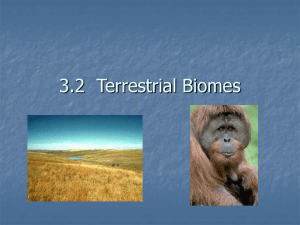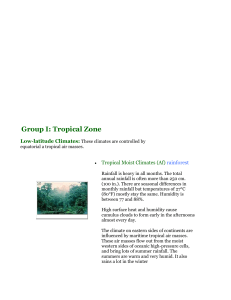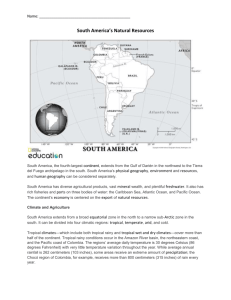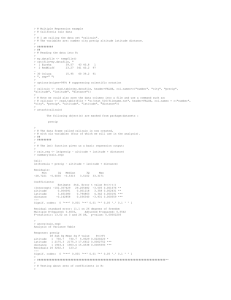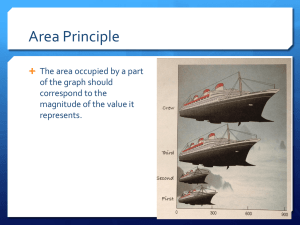Climate: Factors that Affect Climate
advertisement
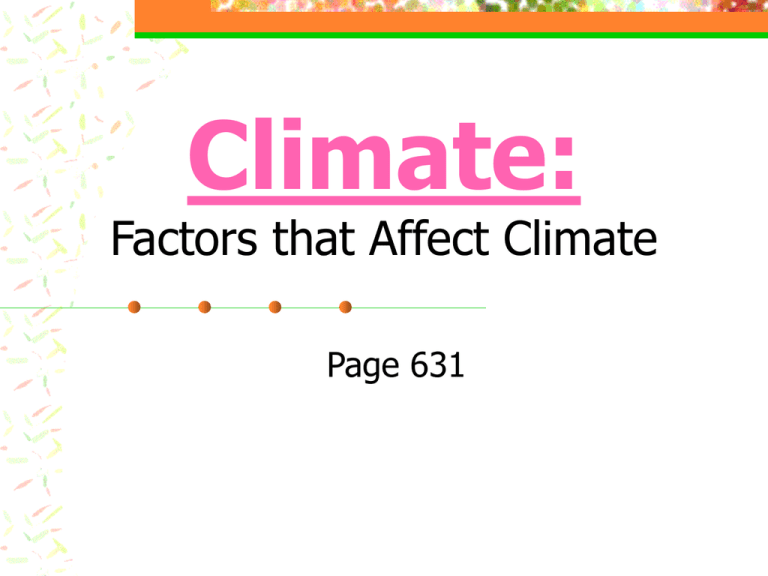
Climate: Factors that Affect Climate Page 631 Climate The average weather conditions for an area over a long period of time Weather The conditions of the atmosphere at a particular time: temperature, humidity, wind, precipitation May vary day to day Temperature Climates are chiefly described by using average temperature and precipitation Averaging done by taking the high and low temps of the day and averaging them Monthly average is the average of all the daily averages Yearly average is average of all monthly averages Yearly temperature range The difference between the highest and lowest monthly averages Areas that have similar average temperatures may have very different temperature ranges Precipitation Is is also described using average monthly and yearly averages As with temperature they can not adequately describe a climate The months that have the largest amounts of precip are important for determining climate Extremes as well as averages must be considered Factors that affect temp and precip are: Latitude Heat absorption and release Topography Latitude Different latitudes receive different amounts of solar energy Solar E determines temp and wind patterns which influence the temp and precip What is our latitude and longitude? Winfield is 37.27°N 96.96°W ? How does latitude affect our climate? Solar Energy The higher the latitude the smaller the angle at which the sun’s rays hit Earth Due to 23.5 tilt on axis and revolution around the sun Global Wind Patterns Winds affect many weather conditions Precipitation Temperature Cloud cover Regions that have different wind belts have different climates Low pressure--air rises, cools and lots of rain High pressure—air sinks little raindeserts Heat Absorption and Release Latitude and cloud cover affect the amt of solar E an area receives However different areas absorb and release heat differently Land heats up and cools off faster Water heats up and cools off slower Specific Heat The amount of energy necessary to raise the temperature of 1g of water 1 C Water has a higher specific heat than land so it can also release more energy than land The energy warms the air and affects climate Reading/Application Check Why does the gulf stream have more affect on England than on the US? El Nino-Southern Oscillation A cycle of changing wind and water current patterns in the Pacific Ocean Every 3-10 years the warm water phase causes the surface water temps along the west coast of South America to rise Can change global weather patterns Seasonal Winds Includes the monsoons Topography The surface of the land influences climate Elevation produces distinct temperature change Rain Shadows When a moving mass of air approaches a mountain is it raised up over the range When it rises, it cools and if it is moist, rain falls on the windward side of the mountain Climate Zones Pg 637 Earth has 3 major climate zones Tropical Middle latitude (Temperate) Polar Tropical Climates High temperatures in the equatorial regions Three types of tropical climates: Tropical rain forest Tropical desert Savanna Tropical Rain Forest Humid and warm Dense vegetation Rainfall of 200cm/yr Tropical desert Less than 25 cm /yr of rainfall little or no vegetation N Africa and SW Asia Savanna Open grasslands that have drought resistant trees and shrubs Very wet summers and very dry winters S America SE Asia Africa N Australia Middle Latitude-temperate 23.5-66 degrees Many biomes Polar Regions Three types of polar climates Subartic climate Tundra climate Polar icecap climate Sub arctic climate Has the largest temperature range as much as 63 degrees Tundra climate smaller range of temps but average temp is colder Polar icecap climate Most of the land surface and much of the ocean are covered in thick sheets of ice Average temps never rise above freezing Local climates The climate of a small area is called a microclimate
